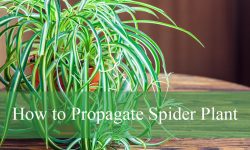Types of Monstera Plants offer a range of distinct foliage variations that appeal to both indoor gardeners and botanists alike. From the popular Monstera Deliciosa to the rare Monstera Punctulata, each species has unique characteristics that contribute to the appeal of these evergreen vines. Let’s explore some varieties in the Monstera genus through this article.
Different Types of Monstera Plants
Monstera Obliqua
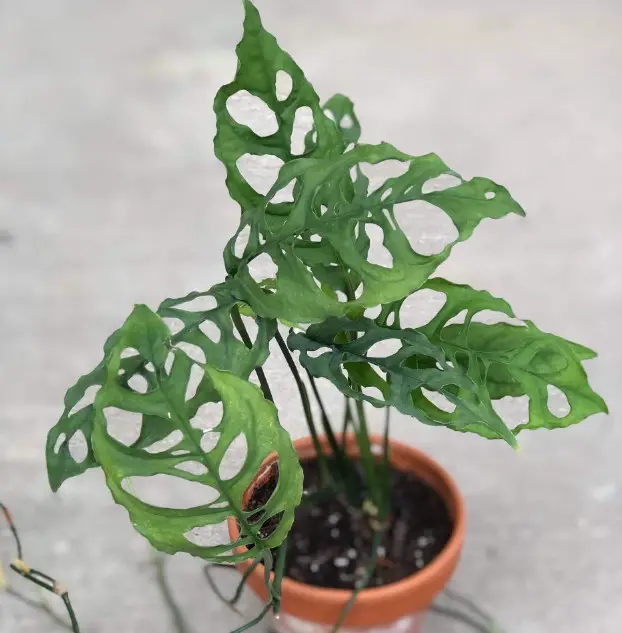
Monstera Obliqua stands out as one of the rarest varieties of evergreen vines, originating from Central and South America. Outdoors, it can reach heights of 6 to 10 feet, boasting a unique green spathe complemented by a greenish-white or yellow spadix.
Flourishing in bright indirect sunlight and loamy, well-drained soil, it requires moderate watering and monthly fertilization. However, its toxicity to humans and pets necessitates careful handling.
Distinguished by its pronounced fenestration, delicate leaves, and slower growth rate compared to Monstera Adansonii, it remains a sought-after plant for enthusiasts.
Monstera Pinnatipartita
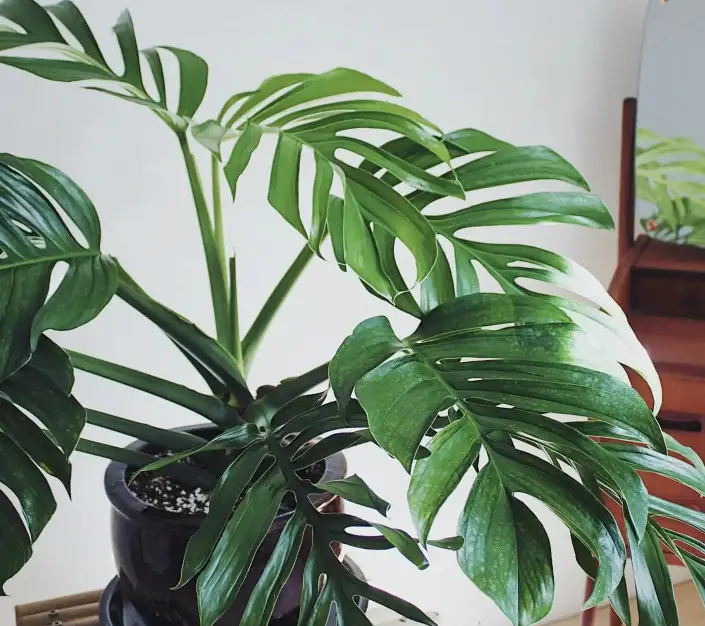
Monstera Pinnatipartita, an enchanting evergreen vine known for its delicate flowers, originates from Central and South America. It can reach impressive heights of up to 66 feet outdoors and 4 to 6 feet indoors, boasting an elegant white spathe and spadix.
Flourishing in partial sun and well-drained soil with a slightly acidic to neutral pH, it requires moderate watering and monthly fertilization, albeit with caution due to its toxicity.
Unlike Deliciosa, Pinnatipartita exhibits a more compact stem growth and shorter internode spacing, resembling less of a vine. Its large, glossy, deep green leaves, with deeply fenestrated slits, evoke a palm-like appearance. This variety also blooms in its natural habitat, yielding fruit.
Monstera Siltepecana (Silver Monstera)
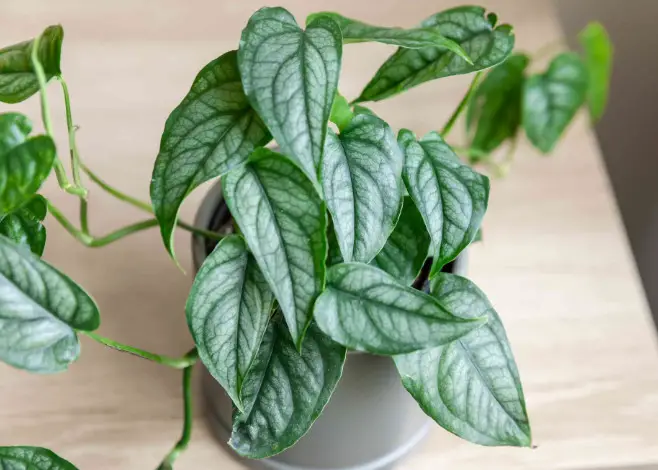
Monstera Siltepecana, known as the Silver Monstera, is a rare variety originating from Mexico and Central America. With a height ranging from 6 to 8 feet, it adds a unique charm to any space. Its creamy white spathe and slightly darker spadix, adorned with black imprints, make for a striking display.
Thriving in bright indirect sunlight and well-drained soil, it requires moderate watering and monthly fertilization during the spring and summer months.
With silvery-green leaves featuring prominent silver veins and darker green edges, Siltepecana boasts a unique leaf pattern reminiscent of Monstera Dubia. However, its longer, pointed leaves and bushy vine appearance set it apart. As it matures, fenestrations develop towards the leaf center, accompanied by a loss of leaf coloring.
Monstera Karstenianum (Monstera Peru)
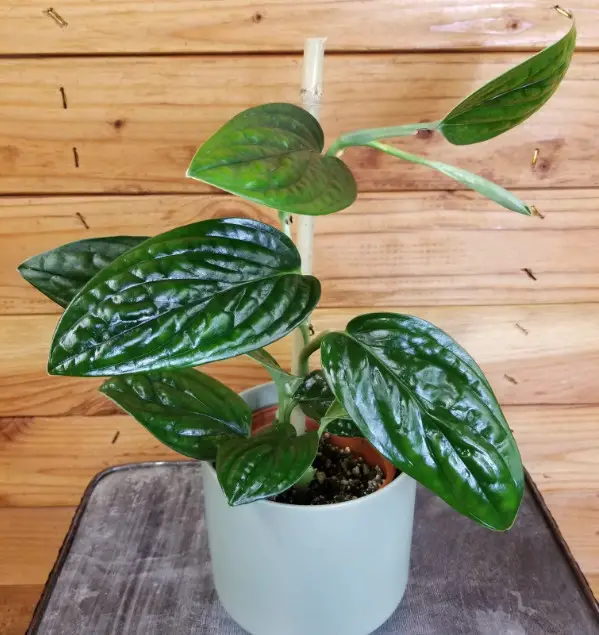
Monstera Karstenianum, also known as Monstera Peru, is an evergreen vine native to Peru. Its indoor height ranges from 6 to 8 feet, making it suitable for various indoor spaces. Sporting green and white spathes and spadix, it adds a subtle elegance to its surroundings.
Thriving in partial shade and loamy, well-drained soil, it requires moderate watering and monthly fertilization during the growing seasons.
Its small, leathery, glossy leaves boast a unique dark green hue and a wrinkled texture, lacking the fenestrations seen in other Monstera varieties. Like Adansonii, Monstera Peru grows as a vine, adding to its appeal in indoor landscapes.
Monstera Acuminata (Shingle Plant)
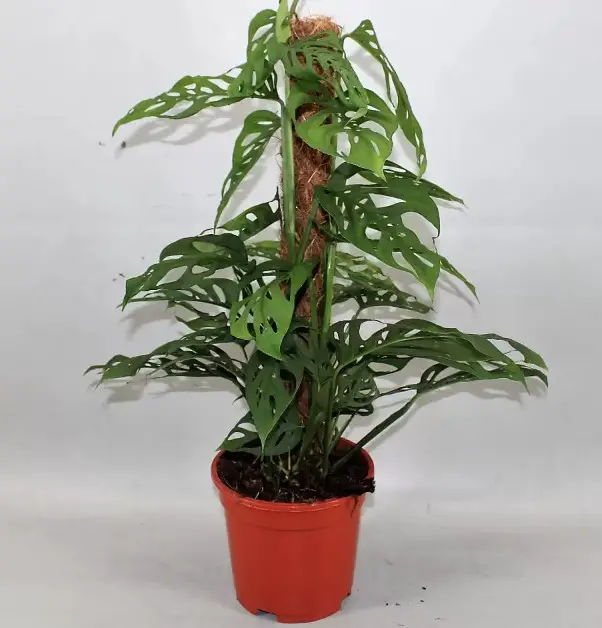
Monstera Acuminata, known as the Shingle Plant, is an evergreen vine originating from Mexico and Central America. Outdoors, it can reach towering heights of up to 98 feet, while indoor specimens typically stay around 8 feet tall.
Featuring cream spathes and spadix, it thrives in well-drained soil and prefers full to partial sun exposure. Resembling Monstera Adansonii, Acuminata distinguishes itself with asymmetric leaves, one side wider than the other, often with more fenestrations. Initially heart-shaped and waxy, its leaves grow in overlapping ranks, lending to its shingled appearance against surfaces. As a juvenile, it sprawls horizontally but can climb vertically as it matures.
Monstera Epipremnoides (Monstera Esqueleto)
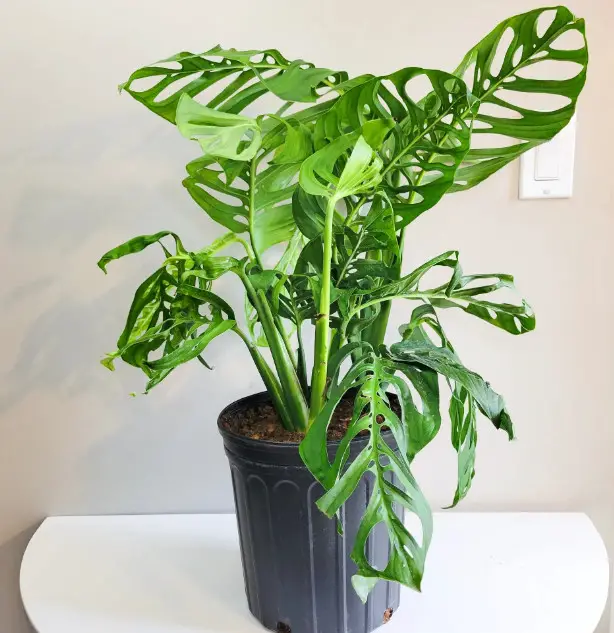
Monstera Epipremnoides, known as Monstera Esqueleto, is an evergreen vine native to Costa Rica. Standing 7 to 13 feet tall, it undergoes a remarkable transformation as it matures, resembling Monstera Adansonii in its youth.
Its dark green leaves can grow up to 31 inches long and 17 inches wide, featuring small perforations along the central rib and larger holes extending from the midrib to the margin. In maturity, the leaves fan out, giving them a droopy appearance with a soft, floppy texture. This variety also blooms and produces fruit in its natural habitat or controlled environments.
Monstera Standleyana (Five Holes Plant)
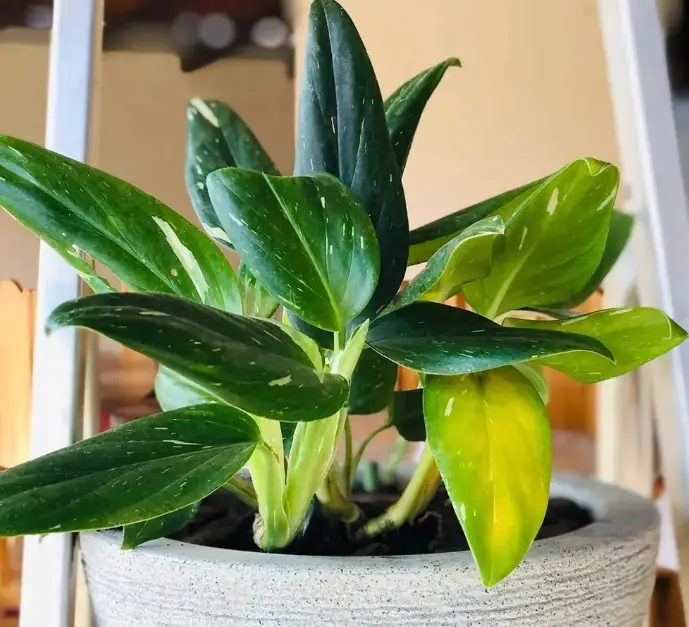
Monstera Standleyana, or the Five Holes Plant, is a prized variegated Monstera, rare and often marketed as Philodendron Cobra. Originating from Costa Rica, Honduras, Nicaragua, and Panama, it’s known for its distinctive dark green waxy leaves with creamy, white, or yellow spots and streaks.
Unlike the classic heart-shaped leaves of Monstera Deliciosa, Standleyana’s foliage is long, narrow, and lance-shaped, pointing upward rather than drooping. Notably, it doesn’t develop fenestrations at maturity like other Monsteras, and its growth rate is slower, making it a coveted addition to collections.
Monstera Subpinnata
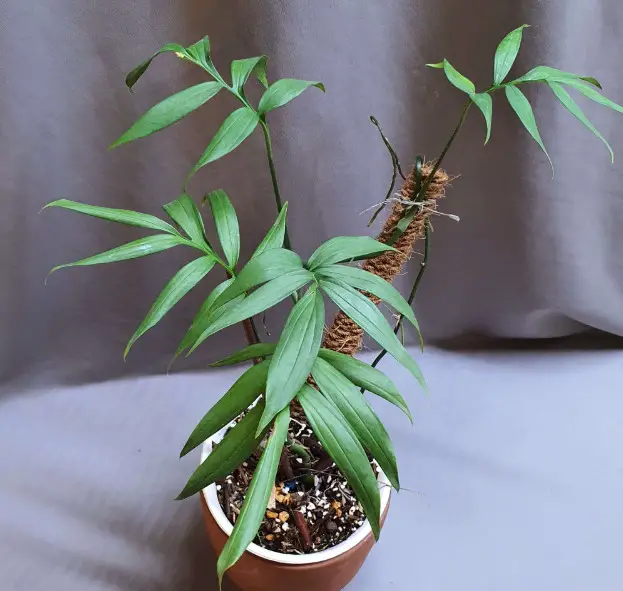
Monstera Subpinnata is a rare Monstera species originating from Bolivia, Colombia, Ecuador, and Peru. Growing up to 33 feet outdoors and 3 to 6 feet indoors, it’s distinguished by its cream or yellowish-pink spathe and yellowish spadix.
Thriving in bright indirect sunlight and well-drained soil, it features split-leaf fenestration, with fanned-out foliage reminiscent of palm leaves. Its pinnate foliage showcases symmetrically paired leaflets on either side of the stem, resembling mature Pinnatipartita but with an extreme palm-like appearance. Mature leaves can grow up to 1 foot long and 8 inches wide. Additionally, it blooms in its natural habitat.
Monstera Acacoyaguensis
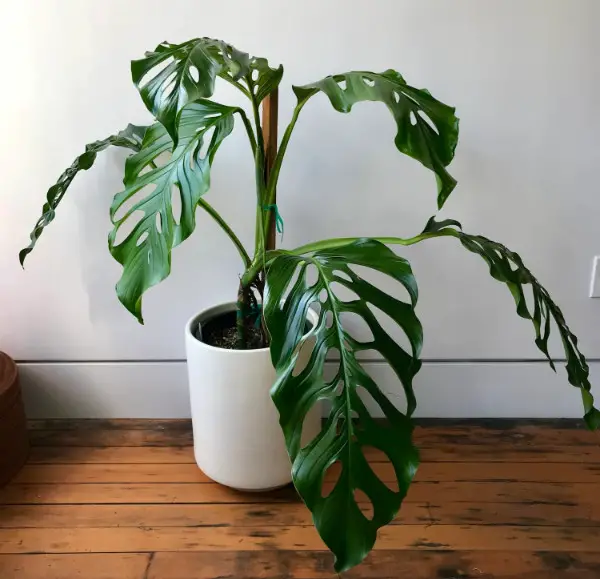
Monstera Acacoyaguensis, originating from Belize, Guatemala, and Mexico, is an evergreen vine prized for its striking appearance. Growing up to 20 feet outdoors and 4 to 6 feet indoors, it features oval-shaped glossy green leaves with a leathery texture in its youth.
As it matures, the leaves expand and develop fenestrations, boasting oval-shaped holes. With leaves reaching 24 to 33 inches long and 14 to 18 inches wide, Acacoyaguensis resembles a mature Monstera Adansonii, yet its fenestrations differ, often appearing in one or two series. Despite these similarities, it flowers in its natural habitat.
Monstera Punctulata
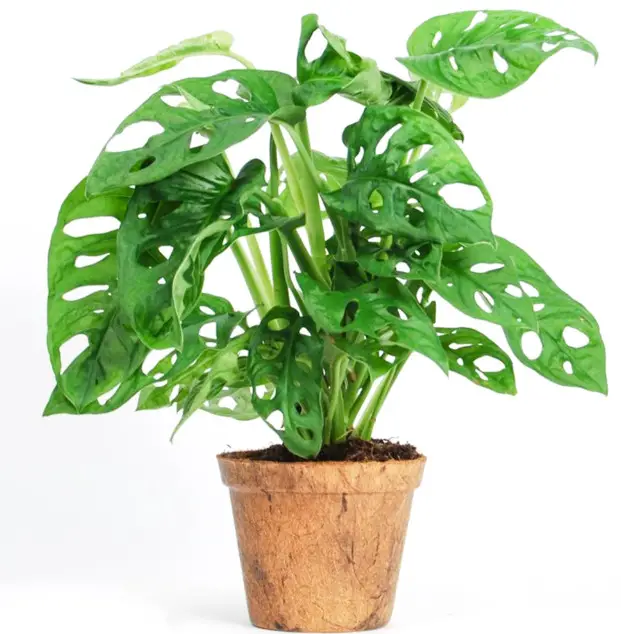
Monstera Punctulata, a rare species, is renowned among collectors for its unique characteristics. Originating from Mexico and Central America, it can grow up to 50 feet outdoors and 7 to 10 feet indoors.
Featuring white spathes and deep green to greenish-gold spadices, it thrives in well-drained soil under bright indirect sunlight. As a juvenile, it behaves as a shingle plant with flattened stems, while mature leaves, measuring 23.6 to 47.2 inches long and 13.8 to 23.6 inches wide, exhibit bright green coloration with white lateral veins and soft texture.
With large leaves adorned with perforations, fenestrations, and densely flecked petioles, Monstera Punctulata offers a stunning display. Additionally, it blooms and bears fruit in its natural habitat.
Monstera Lechleriana
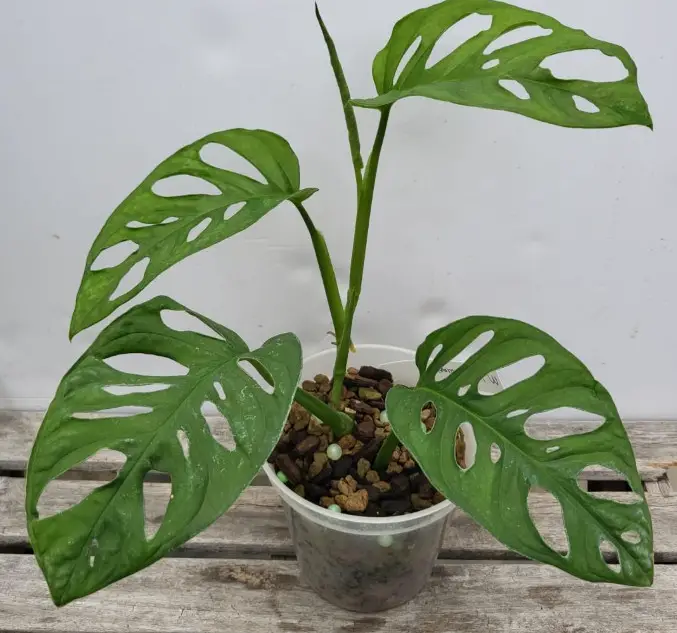
Monstera Lechleriana, originating from Bolivia, Colombia, Ecuador, Panama, Peru, and Venezuela, is a striking evergreen vine. With a potential height of 23 feet outdoors and 4 to 6 feet indoors, it thrives under bright indirect sunlight.
Resembling Adansonii, its distinguishing feature is hole development along the center ridge of the leaves instead of at the edges. Its oval-shaped, leathery, glossy green leaves, measuring 30 to 47 inches long and 14 to 28 inches wide, boast a pale underside. Additionally, Lechleriana flowers and bears fruit in its natural habitat.
Monstera Deliciosa Variegata
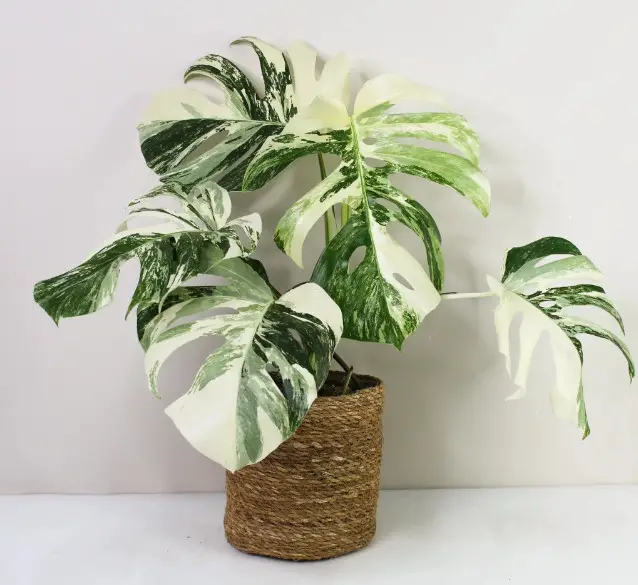
Monstera Deliciosa Variegata, also known as Albo Variegata, stands out as one of the most sought-after variegated varieties of Monstera. As a cultivar of Monstera Deliciosa, it typically reaches heights of up to 6 feet indoors.
Characterized by its striking white or cream patches on the leaves, this variegation arises from natural genetic mutation post-germination. However, it’s worth noting that this variegation isn’t stable, and leaves may display variations, including halves that are green and white, creating a stunning Monstera half-moon effect.
Monstera Deliciosa Thai Constellation
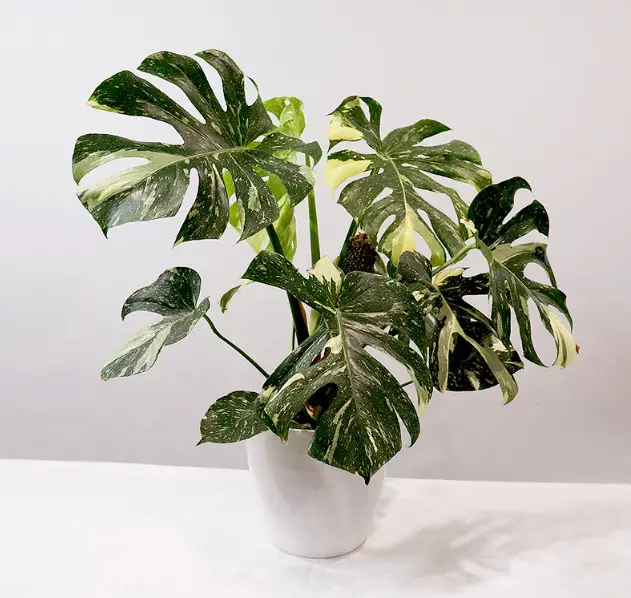
Monstera Deliciosa Thai Constellation, originating from tissue culture in Thailand, boasts exceptionally stable variegation. This cultivar of Monstera Deliciosa typically grows up to 6 feet tall indoors. Named for its resemblance to a starry sky with creamy white splotches, its variegation is notably consistent across leaves.
Unlike other variegated Monstera varieties, almost all Thai Constellation leaves feature variegation, making it a distinctive choice for enthusiasts seeking a striking and reliably patterned houseplant.
Monstera Deliciosa Albo Borsigiana
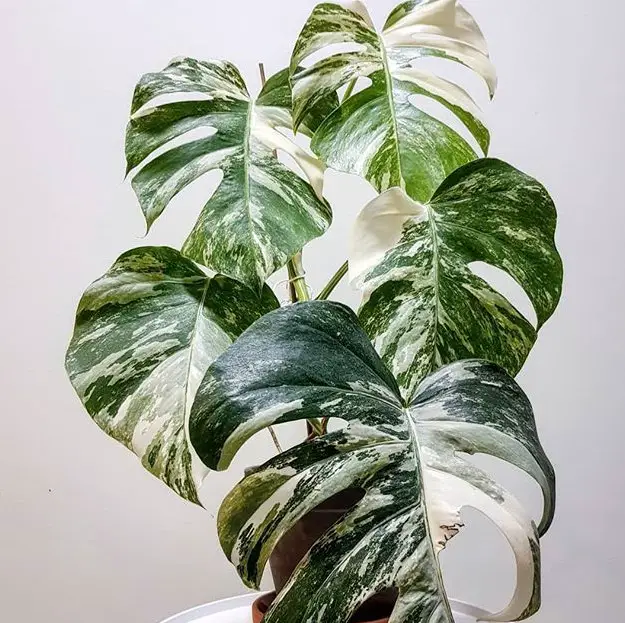
Monstera Deliciosa Albo Borsigiana, a subspecies of Monstera Deliciosa, represents the variegated version of Monstera Borsigiana. Typically reaching heights of up to 6 feet indoors, it features dark green leaves adorned with patches of white.
Unlike other variegated varieties, Albo Borsigiana showcases large, unstable patches of white variegation that may revert to green over time. Despite its smaller leaf size compared to other variegated Monstera types, it remains a wonderful addition to indoor spaces, thriving in medium, well-drained soil and bright indirect sunlight.
Monstera Deliciosa Aurea (Marmorata)
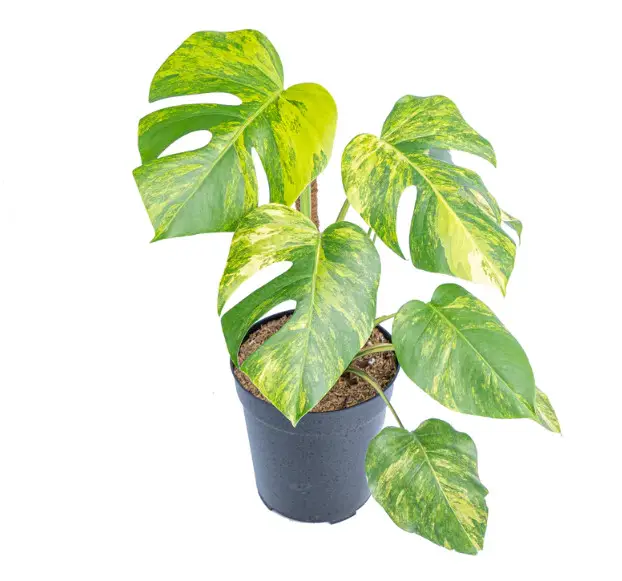
Monstera Deliciosa Aurea, also known as Monstera Deliciosa Marmorata, boasts a striking color combination of dark green and yellow. Resembling the variegation of a Golden Pothos, its yellow patches may appear on small areas or cover half of the leaf.
Unlike other variegated varieties, Aurea often exhibits less variegation, with some leaves lacking it altogether. However, its variegation is unstable, adding to its rarity and allure, reflected in its high price among collectors.
Mint Monstera
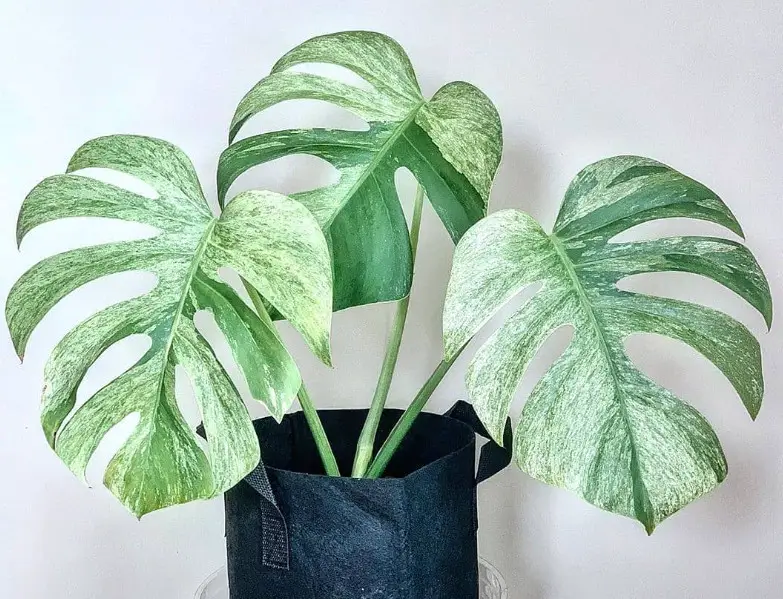
The Mint Monstera, a rare cultivar originating from Monstera Noid, features a unique light mint green coloration amidst its traditional dark green foliage. Unlike typical variegations, this cultivar may exhibit inconsistent mint green patterns alongside bright white variegations across its leaves.
As it matures, it develops deep fenestrations, with only secondary fenestrations becoming visible. While initially resembling traditional Albo variegation, it eventually reveals its distinctive mint veining, adding to its allure and mystery among plant enthusiasts.
Monstera Karstenianum Variegata (Monstera Peru Variegata)
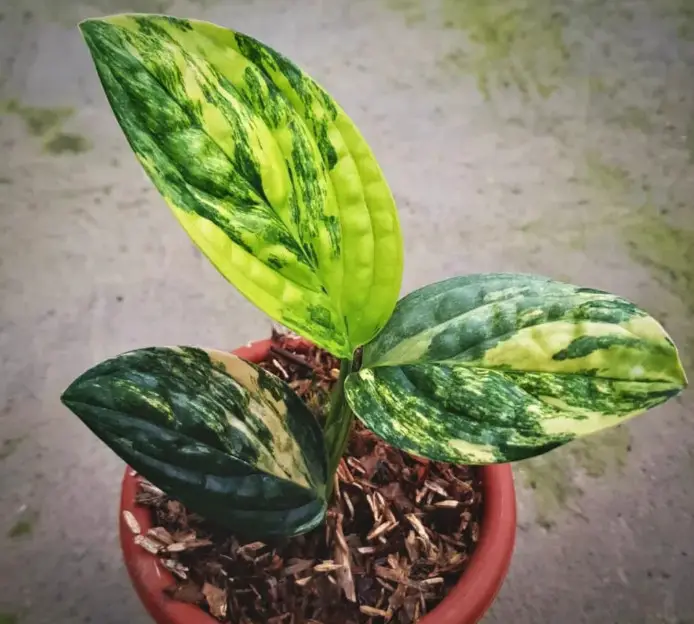
Monstera Karstenianum Variegata, or Monstera Peru Variegata, derives from the Monstera Karstenianum. Typically growing 6 to 8 feet tall indoors, it prefers partial shade and well-drained, loamy soil. With moderate watering and monthly fertilization, it thrives in USDA Hardiness Zones 10b to 12b.
Caution is advised due to its toxicity. The variegation, resulting from a spontaneous cellular mutation, presents as white, yellow, or light green patches on thick, dark green leaves. Unlike Monstera Peru, its variegated form does not develop fenestrations.
Monstera Deliciosa (Swiss Cheese Plant)
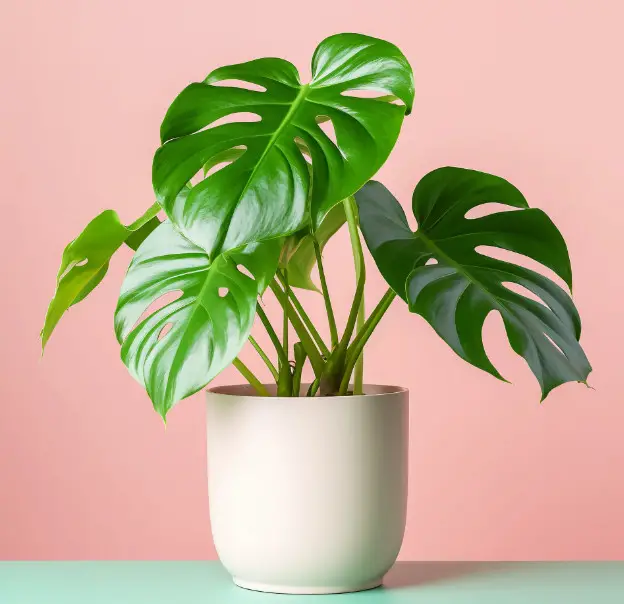
Monstera Deliciosa, commonly known as the Swiss Cheese Plant, originates from Mexico and Panama. It thrives indoors, reaching heights of 6 to 10 feet, while outdoor specimens can soar up to 66 feet tall. Its cream-white spathe and yellowish-white spadix lend an elegant touch to any space. This plant prefers well-drained soil and bright indirect sunlight, flourishing in USDA Hardiness Zones 10 to 12.
However, its toxicity to humans and pets necessitates careful handling. Moreover, its heart-shaped, leathery, dark green leaves can grow impressively large, often featuring fenestrations or holes, a trait shared among various Monstera varieties. In its natural habitat or controlled environments, it blooms, producing edible fruits.
Monstera Adansonii (Swiss Cheese Vine)
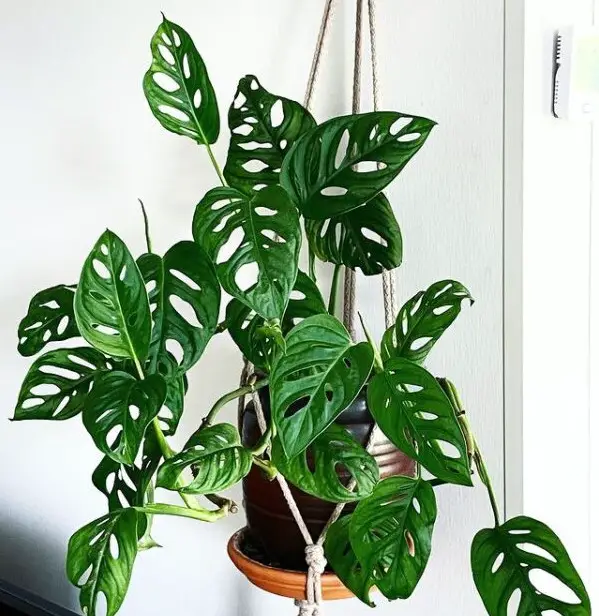
Monstera Adansonii, also called the Swiss Cheese Vine, is a beautiful evergreen vine originating from South America, Central America, and the West Indies islands. Indoors, it grows to heights of 3 to 5 feet, while outdoor specimens can reach up to 13 feet tall. With its delicate white, yellow, or rose spathe and green, white, or yellow spadix, it offers a stunning display.
Thriving in bright indirect sunlight and well-drained soil, it adds a touch of tropical charm to any space. However, caution is advised due to its toxicity to humans and pets.
Adansonii features smaller, narrower oval-shaped leaves with thick, waxy textures and large oval-shaped holes, adding to its allure. In its natural habitat or controlled environments, it blooms and bears fruit.
Monstera Borsigiana
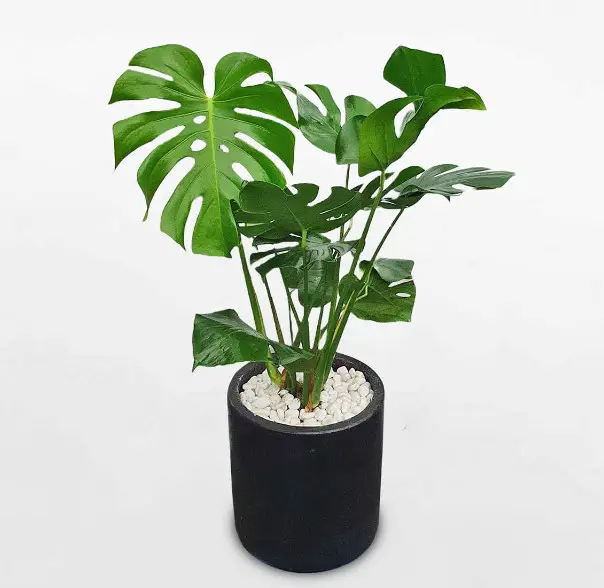
Monstera Borsigiana, a petite evergreen vine originating from Mexico, brings a touch of tropical allure to indoor spaces. With a modest height of 2 to 4 feet, it’s perfect for adding greenery without overwhelming a room. Although it doesn’t produce flowers, its lush foliage more than compensates.
Thriving in bright indirect sunlight and well-drained soil, it requires moderate watering and monthly fertilization during the growing seasons. However, care should be taken due to its toxicity to humans and pets.
Distinguished by its smaller leaves, slender stems, and longer internodes compared to Monstera Deliciosa, it grows at a faster pace, making it a delightful addition to any interior landscape.
Monstera Dubia
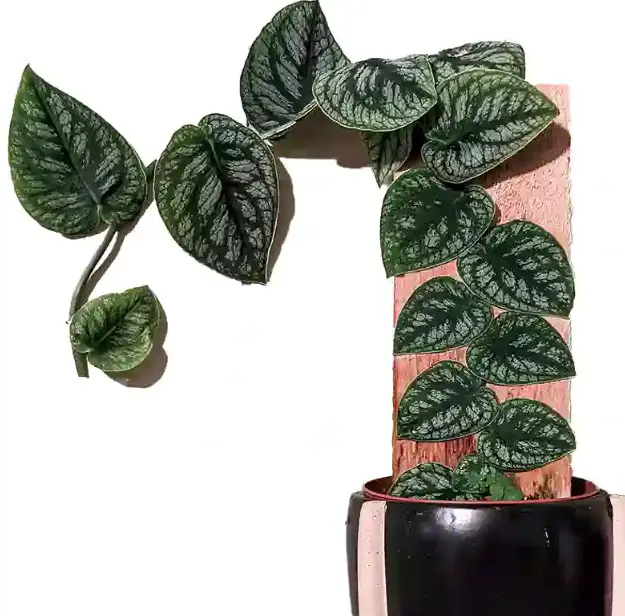
Monstera Dubia, an evergreen vine with stunning flowering qualities, hails from Central and South America. Outdoor specimens can grow up to 10 feet tall, while indoor plants typically reach heights of 3 to 6 feet. Its striking salmon pink spathe paired with a cream spadix adds a touch of elegance to any setting.
Thriving in partial sun and well-drained, loamy soil, it requires moderate watering and monthly fertilization during the growing seasons, but caution is advised due to its toxicity.
Its juvenile form showcases small heart-shaped leaves, while mature plants develop larger, deep green leaves with fenestrations, although this transformation is rare in indoor settings. Contrary to common belief, Monstera Dubia blooms in its natural habitat.

